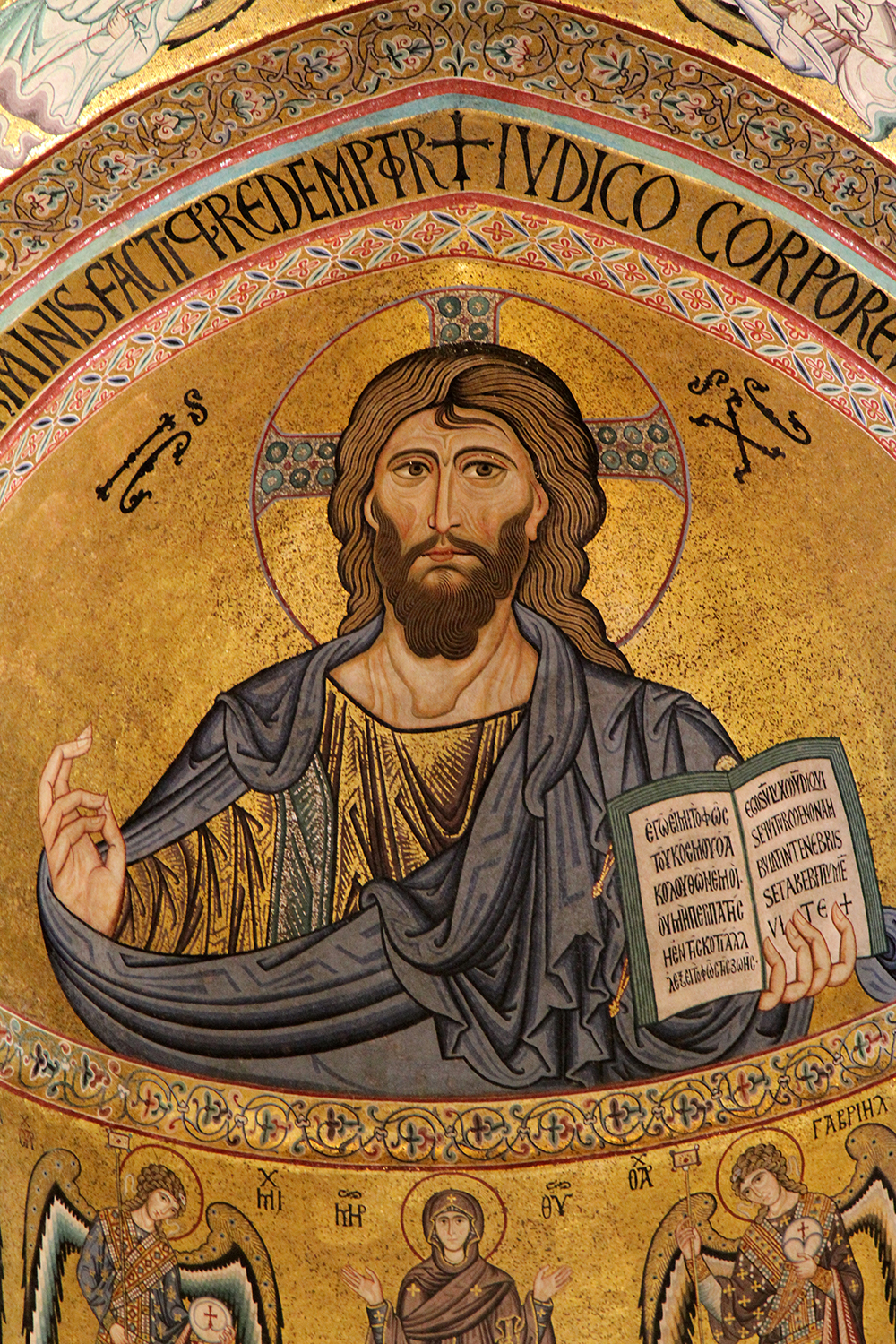From Turkey to Italy, churches built during the Byzantine period host the best-known icon of Christian art.
Lenten Campaign 2025
This content is free of charge, as are all our articles.
Support us with a donation that is tax-deductible and enable us to continue to reach millions of readers.
Any traveler who has visited churches in Greece, Turkey or parts of eastern and southern Italy is probably familiar with the hypnotic icon of “Christ Pantocrator.”
In these gold-colored icons, Christ is represented as a majestic ruler sitting on a throne, giving his blessing with his right hand, shown with three fingers positioned so as to mark an “X” and a “C,” the first and last letter of the word “Christos” in ancient Greek (Χριστός).
In his left hand, Jesus is holding a copy of the Gospels. Known as “Christ Pantocrator,” a word formed by the ancient Greek words πᾶς, pas (‘all”) and κράτος, kratos (“strength”), literally “the one who has all the strength,” it is a visual representation of Christ’s omnipotence.
This powerful image was one of the earliest depictions of Christ in early Christian times and later became a pillar of Byzantine art. That’s why today we can find it in churches that were built in parts of the now-defunct Byzantine empire, from Egypt, to Turkey, and parts of eastern and southern Italy.

Read more:
The six oldest images of Jesus
Here are some of the most famous churches that host examples of Christ Pantocrator icon:
St. Catherine Monastery, Sinai Desert, Egypt
It is believed that the icon of Christ Pantocrator kept at St. Catherine Monastery in the Sinai desert is the oldest surviving example of its sort. Showing particularly piercing eyes, Christ is depicted in the usual “Pantocrator” pose, with his right hand opened in a sign of blessing and his left hand holding the scriptures. Painted during the 6th or 7th century using a wax medium over a wooden panel, it was spared from the destruction of icons carried out by iconoclasts during the periods 726 to 787 and 814 to 842. A restoration undertaken in 1962 revealed the original icon, lying under layers of overpainting, which was probably created in the capital of the Byzantine Empire, Constantinople.

Cappella Palatina, Palermo, Italy
Hosted inside the private chapel of the Norman palace in Palermo, Sicily, this icon is a testament to Byzantine influence in Norman-occupied Sicily during the 12th century. This shimmering mosaic, placed at the top of the dome, was realized with thousands of small-sized pebbles of glass, stone and gold. It was probably created by Byzantine artists hired by Roger II of Sicily. Christ is depicted wearing a blue mantle, against a shimmering golden background. His hand is positioned so as to form the classic “XC” symbol, a reference to the first and last letter of the word “Χριστός” (Christos in ancient Greek).

Basilica di Santa Pudenziana, Rome, Italy
Dating to the 4th century, this mosaic of Christ Pantocrator, an icon showing the omnipotence of Jesus typical of Byzantine art, is one of the oldest existing images of Christ Pantocrator found in Rome. Indeed, the Basilica of Santa Pudenziana, where this icon is found, is considered the oldest place of Christian worship in Rome. Christ is shown in the typical majestic pose of the Pantocrator icon, surrounded by the Apostles, a typical feature of Early Christian art.

Monreale Cathedral, Sicily, Italy
One of the greatest examples of Norman architecture, the Cathedral of Monreale was listed as a UNESCO World Heritage site thanks to its architecture and rich collection of Byzantine artworks. This icon of Christ Pantocrator, typical of Byzantine art, represents an almighty Jesus holding a copy of the scriptures in his left hand and giving his blessing with his right hand, positioned so that his fingers form the first and last letter of the word “Χριστός” (Christos in ancient Greek). It was probably created in the 12th or 13th century by Venetian artists.

Cefalu Cathedral, Sicily, Italy
Much like Monreale Cathedral, Cefalu Cathedral is considered a UNESCO World Heritage Site for its architecture and the treasure trove of Byzantine art it hosts. This mosaic represents Christ Pantocrator, a typical Byzantine icon showing Christ holding the scriptures in his left hand and giving his blessing with his right hand, forming the letters “XC,” a reference to the first and last letter of the word “Χριστός” (Christos in ancient Greek). Completed in the 10th century, it is considered one of the finest examples of Byzantine art in Italy due to the interplay of color, from the intense gold background to the luminous blue of Christ’s clothing.

Hagia Sophia, Istanbul, Turkey
Created in the 11th century, this Byzantine mosaic representing Christ Pantocrator is considered the most sophisticated mosaic of Hagia Sophia Church in Istanbul, Turkey. It is part of a wider set of mosaics known as Deësis mosaic, “the mosaics of the gate,” due to their location at the entrance of the Church. Christ is shown in the typical majestic pose of Byzantine Christ Pantocrator icons, holding the scriptures in his left hand and giving his blessing with his right hand. The Bible is opened on the Greek words: “May Peace Be with You. I Am the Divine Light.” The fingers of his right hand are position to form the “XC” symbol, a reference to the first and last letter of the word “Χριστός” (Christos in ancient Greek). But unlike most images of Christ Pantocrator, this ancient icon shows an impressive realism, with incredible detail revealed in the hair and beard of Christ.









